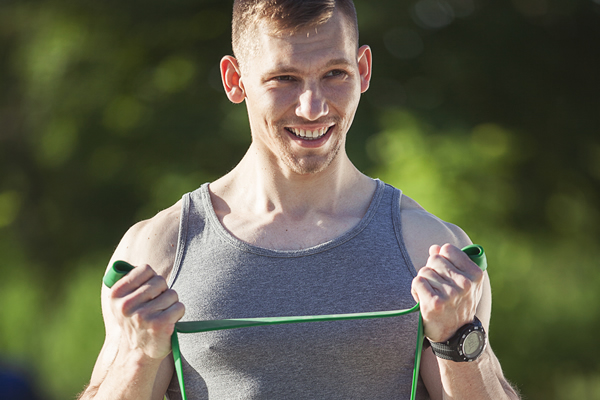
Isolation, whether because of the pandemic, physical or mental health issues, or a combination of those, has affected everyone this year. For LGBTQ youth, already marginalized by society and often lacking support in their own families, it has been especially difficult.
A Trevor Project survey conducted at the end of 2020 found “more than half of transgender and non-binary youth seriously considered suicide.”
In July of 2020, a group of Irish doctors and a representative from a student group called for immediate research and dissemination of self-help resources for young people, stating that “youth, whilst less susceptible to severe COVID-19 infection, is more at risk of the negative psychosocial effects of the pandemic.”
Urban Health Media Project, a D.C.-based nonprofit that helps train high school students in health journalism, surveyed youth about the mental health impacts of the pandemic in April. They wanted to know how LGBTQ youth had been taking care of themselves and about the importance of Pride as society emerged from isolation.
Pandemic life changed the way most people socialize, forcing people to learn how to cope with their own struggles. The concept of “self-care”— practices and methods for maintaining mental and physical health without the aid of the medical community — has become even more important when COVID-19 forced people into lockdown.
But pandemic-era self-care doesn’t look the same for everyone. For some, it’s about taking a bath, taking extra care of their physical health, or developing a new workout routine that doesn’t require a gym.
For many, therapy offers an opportunity to discuss emotions and get feedback and help from a trained professional. Many young people don’t have this option, unfortunately, and COVID has made some reluctant to seek out that type of care.
When therapy or friends are not enough or when they are inaccessible, people have found other ways to release their emotions.
Jada Johnson, a Baltimore writer and social justice advocate who graduated from high school last year, said on the Urban Health Media Project’s “Therapy Thursday” Instagram Live on May 6 that she is considering making more frequent appointments with a therapist. When things get too overwhelming for her, Johnson said she often just does “nothing.” She detaches until she feels strong enough to keep going.
Hot showers also help, she said.
“Hot water, it just relaxes me,” said Johnson. “Like, it just refreshes me, keeps me on the go.”
Radiah Jamil, a rising high school senior at Brooklyn Latin School, who is an LGBTQ ally, uses daily journaling and creative writing: “Writing in general is something I love to do and the activity enhances my quality of life so I like to do all types of writing from creative writing to journalism about any issues and topics on my mind.”
Young Elder, 19, a rap artist and activist from Baltimore, uses music and poetry to cope with the feelings of depression that she has experienced. “It really helped clear my mind and helped me find a different way to put how I was feeling,” she said on UHMP’s May 20 Instagram Live. “Music is how I heal, so it’s a process. So it’s kind of like I’m writing a diary and I’m choosing to share it.”
Teens and young adults surveyed by Urban Health Media Project about self-care also mentioned that favorite songs and movies help them to relax.
Dangers of social media
Turning to social media, however, when feeling anxious or depressed can sometimes add to stress. Social media is not nearly as transparent as some may think; a personal feed can often be just a collection of the best moments of a person’s life, and can sometimes be exaggerated or even fabricated.
Lexi Shepard, 18, of Kokomo, Ind., attested to the impact of social media on her mental health on a May 13 Instagram livestream: “Social media does impact how you view your own accomplishments because it’s very easy to fall into the niche of comparing yourself and what you’ve achieved to what other people are achieving.”
Having just graduated from high school, the college acceptance experience was fresh in her mind. “It’s very easy to sit there and compare and say, ‘wow, I could have done better and I could have done more,’ and have a very negative outlook on it,” she said. “I realized that I needed to be proud of my own accomplishments and realize what’s best for me. I’m making these decisions for myself, not to please people around me.”
Not everyone has that level of perspective and emotional self-awareness, though.
In situations of anxiety or stress, or feeling overwhelmed, the most important thing to do is to acknowledge your emotions and take a moment to yourself, said Calix Vu-Bui, a queer Vietnamese-American licensed therapist for Amwell.
“One of the things I think is so simple is to just tell yourself, or tell someone who’s asking something from you in an anxious moment, ‘I need a moment,’” Vu-Bui said in a May 13 Instagram Livestream organized by UHMP. “How are you going to regulate anything, [or] be able to think and respond to people if you’re not like, ‘wait a second, I’ve gotta breathe.’ And then you actually have to do it!”
Vu-Bui uses a metaphor of a balloon to explain the need to vent and release emotions.
”We’re full of all these emotions and all these things that happen to us… and so all the things [that were] mentioned, from journaling, music, exercise, all these different ways and outlets that we have to just kind of release some tension from that balloon. We’ve got to let some of that air out or we are going to pop.”
Resources for LGBTQ youth
You are not alone. Numerous resources exist for LGBTQ youth. National organizations that provide a full range of support from information and education to individualized care include:
You can call the Trevor Lifeline 24/7/365: 866-488-7386.
They also offer a round-the-clock online confidential chat and a text messaging withTrevor counselors for youth in need. Their website includes resources such as “Protect your space and well-being on Instagram” and “A Coming Out Handbook.”
The National Alliance on Mental Illness also operates a Helpline 800-950-NAMI, or in a crisis text “NAMI” to 741741. They have state affiliates so you can find help wherever you are. You can find your local NAMI by scrolling to the bottom of their “about” page and putting your state into the designated search box. And their “Support and Education” page has information on support groups and even online discussion groups.
The Centers for Disease Control and Prevention has compiled a list of resources for LGBTQ youth, and their educators and school administrators, and their parents and families.
For more localized resources, contact a comprehensive care hospital or a children’s hospital in your region.
The Youth Pride Clinic, for example, provides primary and specialty care services to lesbian, gay, bisexual, transgender and questioning/queer (LGBTQ) young adults between the ages of 12-22 throughout the greater Washington, D.C., region. OR CALL 202-476-5744
Adrian Gibbons graduated from Boston University in May 2021 with a film degree. A trans male, he is an intern with the Urban Health Media Project.








